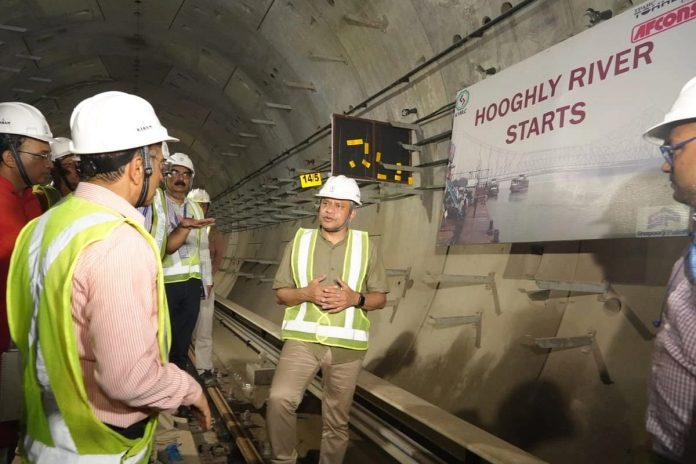Kolkata Metro Railway has now decided to use composite aluminium third rail systems in all the upcoming corridors being constructed, along with retro fitment in existing corridors having the steel third rail system.
The third rail systems are a means of providing electric power to a train through a conductor placed alongside the rails.
The power to the metro rake is supplied to rolling stock at 750 V DC through steel third rail system.
With this Metro Railway, Kolkata would become the member of an elite club of London, Moscow, Berlin, Munich, and Istanbul Metro who have also shifted from steel third rail to aluminium third rail.
Kolkata Metro Railway, India’s first Metro built by Indian Railways on 24 October 1984, has been serving as a lifeline for Kolkata, the city of joy for nearly 40 long years.
In Kolkata Metro Railway, the power to the metro rake is supplied to rolling stock at 750 V DC through steel third rail system. The third rail current collector (TRCC) made of steel, fitted on the metro rake, collects the current from the third rail.
Metro Railway, Kolkata has floated a tender for replacement of existing third rail, in the first phase, to cover the section between Dumdum to Shyambazar.
In the second phase, work would be taken up from Shyambazar to Central and J D Park to Tollygunge. In the third phase, the section between Mahanayak Uttam Kumar (Tollygunge) to Kavi Subhash (New Garia) shall be taken up.
In total, 35 route-km main line steel third rail shall be replaced in stages.
The obvious advantages of aluminium composite third rail, over steel third rail are many, including reduction in resistive current loss and improved traction voltage level, as the resistance of steel third rail is around six times higher than the composite aluminium one.
On an average, a 10 km corridor with use of aluminium composite third rail system, would require one less traction substation, when compared to steel third rail — which is a straight saving of approximately Rs 210 crore capital investment for a 35 km Metro corridor.
The reduced voltage drop shall facilitate achieving faster acceleration with the same rake available with Kolkata Metro Railway.
Composite aluminium third rail has reduced maintenance and life cycle cost. The requirement of painting every 5 years may not be needed anymore.
The frequency of measurement of third rail dimension may reduce significantly and there may be no possibility of damage due to rusting.
Besides huge improvement in energy efficiency and reduction in carbon footprint, it also helps improvement in the efficiency of train operations.
The estimated energy saving using composite aluminium third rail may be approximately 6.7 million units per annum.


